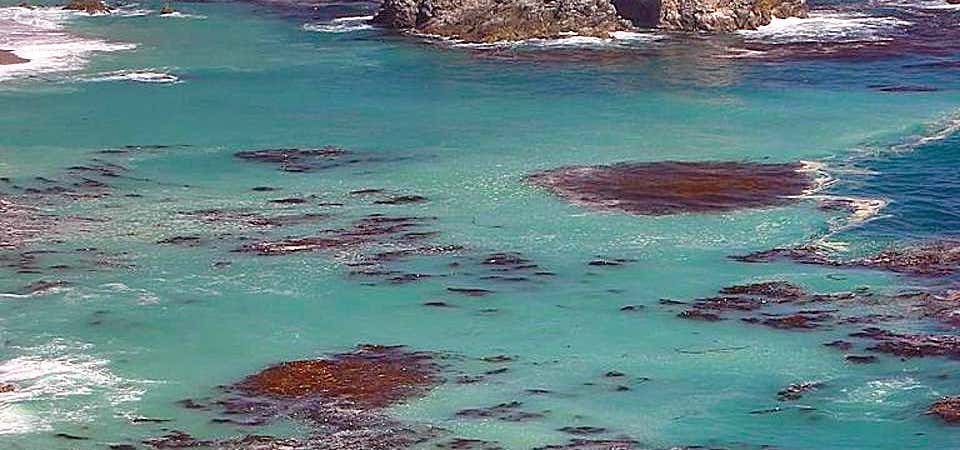Big Sur is a lightly populated, unincorporated region on California's Central Coast where the Santa Lucia Mountains rise abruptly from the Pacific Ocean. The coast is frequently praised for its rugged coastline and mountain views. As the "longest and most scenic stretch of undeveloped coastline in the [contiguous] United States," it has been described as a "national treasure that demands extraordinary procedures to protect it from development" and "one of the most beautiful coastlines anywhere in the world, an isolated stretch of road, mythic in reputation." Big Sur's Cone Peak at 5,155 feet (1,571 m) is only 3 miles (5 km) from the ocean. The stunning views make Big Sur a popular tourist destination. The region is protected by the Big Sur Local Coastal Program which preserves the region as "open space, a small residential community, and agricultural ranching." Approved in 1981, it is one of the most restrictive local use programs in the state, and is widely regarded as one of the most restrictive documents of its kind anywhere. The program protects viewsheds from the highway and many vantage points, and restricts the density of development to one unit per acre in tourist areas or one dwelling per in the far south. About 60% of the coastal region is owned by a government or private agency that does not allow any development. The majority of the interior region is part of the Los Padres National Forest, the Ventana Wilderness, Silver Peak Wilderness, or Fort Hunter Liggett. When the region was ceded by Mexico to the United States in 1848, it was the United States' "last frontier." The region remained one of the most isolated areas of California and the United States until, after 18 years of construction, the Carmel–San Simeon Highway was completed in 1937. The highway has been closed on numerous occasions due to weather and geological hazards and incidents, including a 2 million cubic foot landslide in 2017 that is not expected to be fixed until 2018. The region does not have specific boundaries, but is generally considered to include the segment of California State Route 1 from Carmel River south to San Carpóforo Creek near San Simeon and the entire Santa Lucia range between the rivers. The interior region is uninhabited, while the coast remains relatively isolated and sparsely populated with about 1,000 year-round residents and relatively few visitor accommodations. The original Spanish-language name for the unexplored mountainous terrain south of Monterey, the capital of Alta California, was "el país grande del sur" meaning, "the big country of the south." It was Anglicized by English-speaking settlers as Big Sur.
Reviews
Be the first to add a review to the Big Sur.
/-121.392,35.88,14/300x172@2x?access_token=pk.eyJ1Ijoicm9hZHRyaXBwZXJzIiwiYSI6ImNsdjQ5N2VtZDA2bW8ycW13ZHAxeGhjbjkifQ.UIccpoAxc7g3BAuK4s9vjg)
Big Sur
Hours
Problem with this listing? Let us know.
Has RV parking changed? Let us know.
-
Parking
-
Pets Allowed
-
Restrooms
-
Wifi
-
Wheelchair Accessible
-
Credit Cards Accepted
Nearby Hotels
Related Trip Guides
The Ultimate Guide To Joshua Tree National Park
- 53 Places
- 11:44
- 408 mi
The top things to do on an I-40 road trip
- 35 Places
- 49:44
- 2,851 mi
The top things to do on an I-10 road trip
- 55 Places
- 56:13
- 3,026 mi
